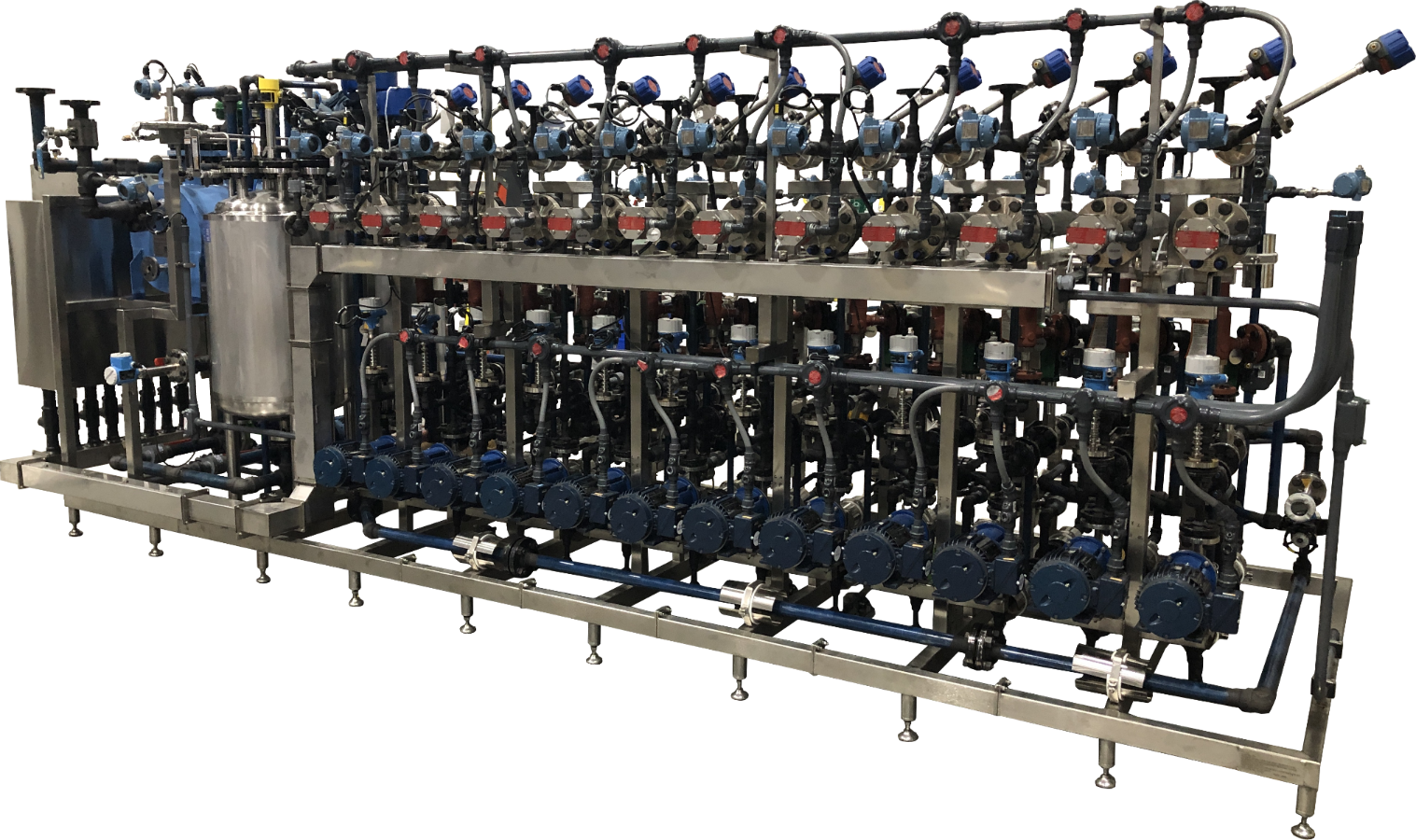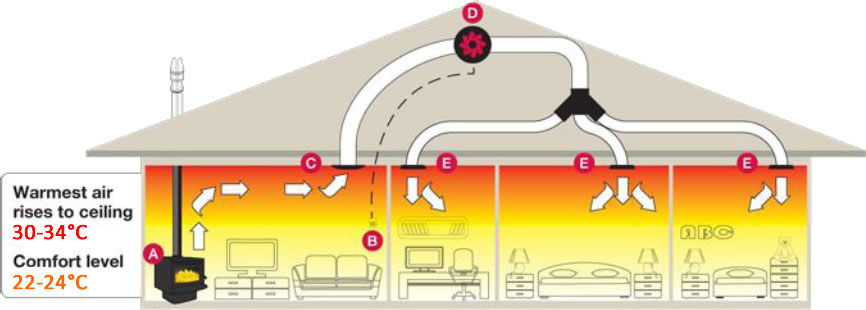Live Data Feedback: How DVS Heat Transfer Systems Enable Predictive Maintenance
Innovations in Heat Transfer Systems: What You Need to Know for Optimal Efficiency
Developments in Heat transfer systems are changing efficiency throughout different industries. Advanced products like graphene and nanofluids guarantee substantial improvements in thermal conductivity. At the same time, the integration of IoT and artificial intelligence provides opportunities for real-time tracking and boosted energy efficiency. Nonetheless, the landscape of thermal administration is swiftly evolving (DVS Heat Transfer Systems). Comprehending these developments is important for accomplishing ideal system performance and sustainability in the future. What specific improvements are forming this improvement?
Emerging Products for Enhanced Heat Transfer

Advanced Heat Exchanger Designs
While typical Heat exchangers have actually served their objective in different applications, progressed layouts are now emerging to satisfy the boosting demands for performance and performance. These cutting-edge layouts, such as plate, shell-and-tube, and finned-tube Heat exchangers, incorporate boosted surface areas and boosted circulation patterns to increase thermal transfer prices. Additionally, portable designs enable minimized space requirements without compromising effectiveness. Advanced products, such as compounds and corrosion-resistant alloys, in addition boost longevity and performance under extreme conditions. Additionally, simulation modern technologies and computational liquid dynamics are progressively used to improve these designs, ensuring peak Heat transfer qualities. As sectors seek to lessen energy intake and maximize result, the fostering of sophisticated Heat exchanger designs is crucial in attaining these goals.
The Duty of Nanotechnology in Heat Transfer
Nanotechnology plays an essential function in enhancing thermal conductivity within Heat transfer systems. By controling products at the nanoscale, researchers have actually achieved substantial improvements in energy effectiveness. These innovations not only enhance performance however additionally contribute to even more sustainable power options.
Boosted Thermal Conductivity
Substantial innovations in thermal conductivity have arised through the application of nanotechnology, changing Heat transfer systems throughout numerous sectors. By integrating nanoparticles right into Heat transfer fluids and products, researchers have actually accomplished remarkable increases in thermal conductivity. These nanoparticles, such as carbon nanotubes, graphene, and metal oxides, boost the Heat transfer properties because of their high area and special thermal characteristics. The resulting composites exhibit improved efficiency in applications ranging from electronics cooling systems to sustainable power modern technologies. The capability to tailor the dimension, form, and composition of nanoparticles permits for optimized thermal monitoring services. Because of this, nanotechnology continues to play a critical role in the advancement of much more efficient and efficient Heat transfer systems, leading the way for boosted commercial applications.
Energy Efficiency Improvements

Integration of IoT in Heat Transfer Equipments
The combination of IoT in Heat transfer systems presents the implementation of smart sensing units that enhance functional performance. These sensing units allow real-time information surveillance, enabling prompt modifications and optimizations. This technological advancement has the potential to substantially boost performance and power monitoring in Heat transfer applications.
Smart Sensors Implementation
As Heat transfer systems evolve, the integration of smart sensing units with the Internet of Things (IoT) has actually arised as a transformative technique. These sensing units allow real-time monitoring of circulation, stress, and go to these guys temperature level rates, improving system efficiency and dependability. By collecting and transferring data, they help with positive maintenance, reducing the threat of system failures. Additionally, clever sensors add to power financial savings by refining operational parameters based on ecological problems. Their capability to analyze trends and abnormalities permits informed decision-making, guaranteeing peak efficiency of Heat transfer systems. As industries significantly embrace this technology, the implementation of wise sensing units stands to change how Heat transfer systems are managed, paving the means for better sustainability and boosted efficiency end results.
Real-Time Information Tracking
Exactly how can real-time information keeping track of enhance the efficiency of Heat transfer systems? By integrating Internet of Points (IoT) modern technology, Heat transfer systems can leverage constant data collection from clever sensors. This real-time monitoring enables instant evaluation of temperature, pressure, and flow rates, allowing drivers to determine inefficiencies website link quickly. Changes can be made to optimize performance, minimize power intake, and extend equipment life expectancy. In addition, predictive maintenance can be applied, decreasing unanticipated downtime and expensive repair services. The capacity to envision efficiency metrics through dashboards enhances decision-making, cultivating an aggressive approach to system administration. Inevitably, real-time data keeping track of not just improves operational efficiency but additionally contributes to sustainability goals within industrial processes.
Power Efficiency and Sustainability Trends
Energy effectiveness and sustainability fads are improving the landscape of Heat transfer systems, driving advancement and compliance across different markets. Organizations are increasingly prioritizing energy-efficient layouts to reduce functional costs and reduce ecological impacts. The combination of sustainable power resources is coming to be extra prevalent, allowing Heat transfer systems to operate sustainably while satisfying regulatory demands. Additionally, improvements in innovations and products promote lower energy consumption and improve overall efficiency. Lifecycle assessments are also gaining traction, enabling firms to examine the environmental impact of Heat transfer systems from manufacturing to disposal. This concentrate on sustainability not just sustains corporate duty however likewise settings companies competitively in a market where consumers progressively prefer environment-friendly services. Energy efficiency and sustainability remain crucial considerations for future developments in Heat transfer modern technology.
Developments in Thermal Monitoring Solutions
While the demand for effective Heat transfer continues to rise, developments in thermal management services are arising to address both efficiency and sustainability difficulties. Advanced materials, such as phase change products and nanofluids, are being created to improve Heat transfer performance - DVS Heat Transfer Systems. These materials improve thermal conductivity and permit far better temperature level policy in numerous applications. Additionally, technologies like active thermal control systems are gaining grip, making it possible for real-time modifications to take care of Heat flow efficiently. These systems contribute to energy financial savings and decrease the environmental influence of thermal processes. The combination of IoT in thermal administration helps with surveillance and anticipating upkeep, making certain optimized performance and longevity of Heat transfer systems. Generally, these technologies stand for considerable strides towards even more sustainable thermal monitoring methods
Future Directions in Heat Transfer Technology
Emerging innovations in thermal administration options signify a promising future for Heat transfer modern technology. Researchers are progressively concentrating on establishing materials with premium thermal conductivity and enhanced energy efficiency. Technologies such as nanofluids, which have suspended nanoparticles, provide significant improvements in Heat transfer efficiency. In addition, the assimilation of wise products that adjust to differing temperature problems is acquiring grip, enabling even more efficient and receptive systems. The increase of additive production techniques is also making it possible for the design of complex Heat exchanger geometries that optimize liquid flow. In addition, the implementation of maker understanding algorithms is anticipated to reinvent the optimization of Heat transfer systems, facilitating anticipating maintenance and performance improvement. Jointly, these advancements are poised to transform the landscape of Heat transfer innovations in various industries.

Frequently Asked Inquiries

Exactly how Do I Select the Right Heat Transfer System for My Application?
Picking the best Heat transfer system involves reviewing application requirements, consisting of temperature varieties, liquid residential or commercial properties, and efficiency requirements. Analyzing system kinds, upkeep factors to consider, and cost-effectiveness likewise plays a vital duty in making an educated decision.
What Are the Maintenance Needs for Advanced Heat Exchangers?
Maintenance requirements for advanced Heat exchangers normally include regular evaluations, checking for leakages, cleansing of surface areas, and guaranteeing perfect flow prices. Sticking to producer standards warranties efficient procedure and extends the devices's life expectancy.
How Do Ecological Elements Impact Heat Transfer Performance?
Ecological factors significantly affect Heat transfer effectiveness. Variations in moisture, temperature, and airflow influence thermal conductivity and convective Heat transfer, inevitably affecting system performance and requiring factor to consider throughout the layout and procedure of Heat transfer systems.
What Safety Requirements Apply to Heat Transfer Equipments?
Safety criteria for Heat transfer systems normally include standards from companies such as ASME and ASTM. DVS Heat Transfer Systems. These requirements address products, layout, and operational methods to assure dependability, efficiency, and protection versus threats in various applications
Just How Can I Fix Usual Heat Transfer System Issues?
Troubleshooting typical Heat transfer system concerns includes examining for leakages, ensuring appropriate liquid circulation, inspecting insulation stability, and verifying temperature level differentials. Recognizing these factors can assist preserve system efficiency and prevent additional problems.
Nanotechnology plays an essential role in boosting thermal conductivity within Heat transfer systems. Considerable innovations in thermal conductivity have actually emerged with the application of nanotechnology, reinventing Heat transfer systems across various markets. Improvements in thermal conductivity through nanotechnology have led the means for amazing renovations in power effectiveness within Heat transfer systems. Power effectiveness and sustainability patterns are improving the landscape of Heat transfer systems, driving advancement and compliance throughout numerous industries. The assimilation of IoT in thermal management assists in monitoring and predictive maintenance, making sure maximized performance and long life of Heat transfer systems.